Apr 9, 2013 | painting
Frothy clouds and hazy distances make for simple scenes of awe in Samantha Keely Smith’s paintings. They’re landscapes taken to a new level – sparkling, glowing and fading – shining enigmas that show more of what we all hope heaven looks like than anything we could ever dream of seeing on this earth. The gods and elements interact without people to mess things up – water, nature and light converging into one scene of wonder.
Land combines with water in “Shift” – a wave of cloud crests in the sunlight above blue sand dunes and before misty air that shines in warm effervescence. Below the breaking wave you can see into the distant blue, to what looks like a glowing forest with clouds instead of leaves. Between two of the center trees shines a white spot of light, like a patronus spell being cast in the distance, or the center seed from which all this beauty has sprung.
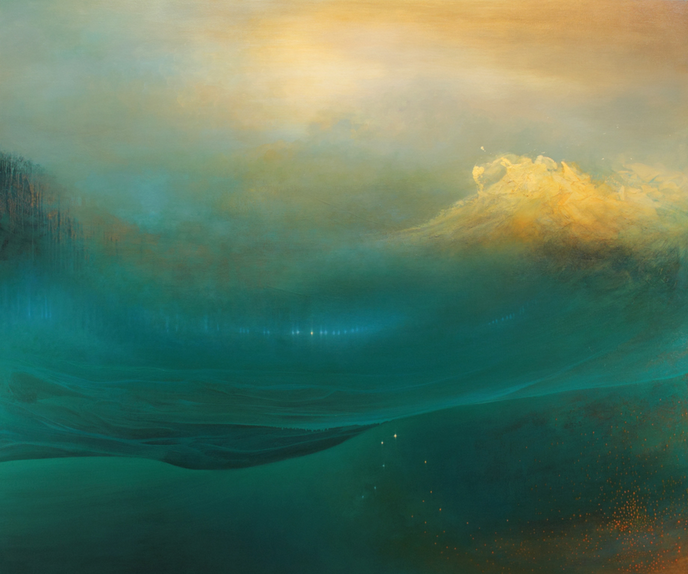
Shift
oil, enamel, shellac on canvas
60″ x 72 “
2012
The waves get speckled orange in “Progeny” – light clouds of paint breaking and bursting in the foreground before a shimmering blue-green haze. “Mutiny” substantiates the water more, almost letting it fill up the canvas and submerging us below its depths, but not without a look into the distance at the land that might be there. Again with a breaking wave as the focus, this one glows bright white, splashing up with spots of pink and shades of orange. “Gathering” shows the calmer scene of a watery mountainside that leads off into the light.
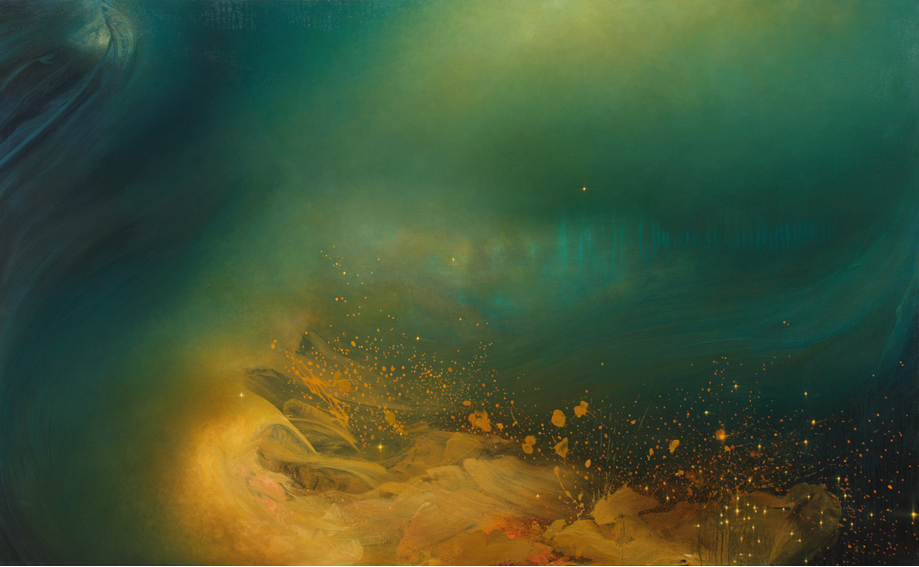
Progeny
oil, enamel, and shellac on canvas
48″ x 78″
2013
Samantha Keely Smith was born in England but moved to the US as a child, and now lives and works in New York. Her work has been shown all over New York City and in Arkansas as well. In 2011, her solo exhibition on Madison Avenue was featured as an Editor’s Pick on ArtInfo, who wrote that her works, “play at the edge of abstraction, blurring between light-filled fields and non-objective compositions.”
Samantha’s artist statement reads:
“Smith’s artwork represents a striving to reconcile the inner world of instinct and the tidal sweep of our emotional life, with an external world that is both beautiful and hostile in its natural grandeur. She attempts to map the place where these worlds intersect.
The translucent layers of paint, contrasting soft ethereal brushwork and harder edged sweeping gestures, echo this divergence and depict a timeless place that hovers between dream and reality in a way that is simultaneously alluring and menacing. The work exhibits the struggle between and among the variety of human impulses: impulses that are as necessary as they are contradictory, and which therefore constantly undermine our psychic and social coherence even as they endow us with vitality, soul, and life. “
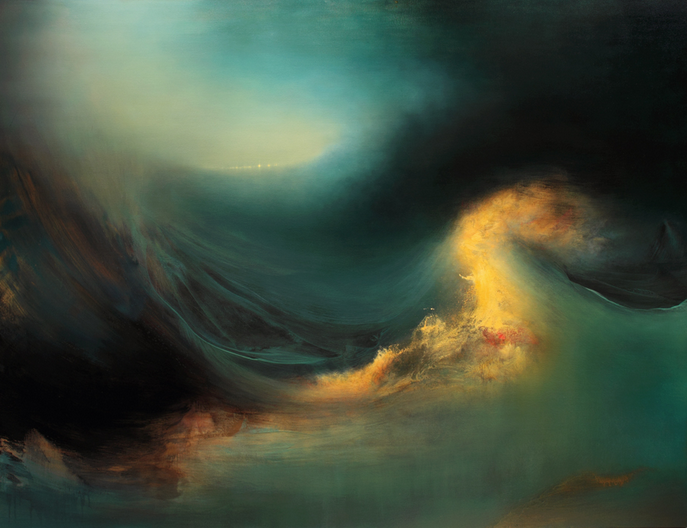
Mutiny
oil, enamel, shellac on canvas
60″ x 78 “
2012
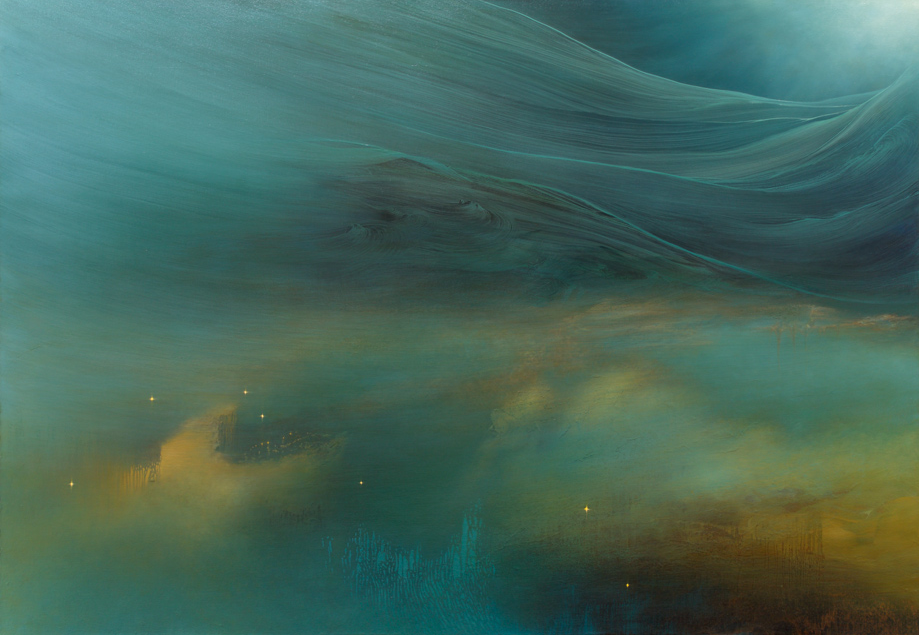
Gathering
oil, enamel, and shellac on canvas
50″ x 72″
2013
For more of Samantha Keely Smith’s work check out her website and her Tumblr.
Apr 8, 2013 | film
The Hours (2002) is a sad, thoughtful movie filled with powerful women. Only, they don’t seem powerful at first. Instead they come across as complacent, frazzled, and confused, but in the end they find what they’re looking for, and it isn’t what you’d expect them to find either.
The movie opens on Virginia Woolf, writing her goodbyes into letters before she walks into the woods and fills her pockets with rocks. Foreshadowing at it’s most obvious, she writes to her husband, “Everything is gone from me but the certainty of your goodness. I can’t go on spoiling your life any longer. I don’t think two people could have been happier than we have been.”
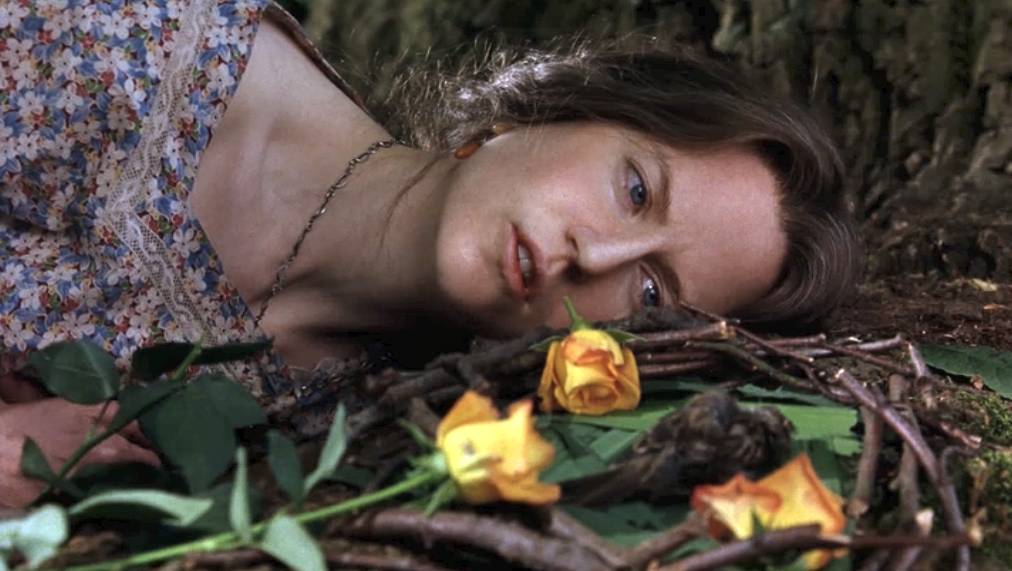
The rest of the movie’s beginning works to thrust you into the lives of three women – Virginia Woolf in 1923 played by a very intense Nicole Kidman, Julianne Moore as Laura Brown in 1951, and Clarissa Vaughan in 2001, played by the ever fabulous Meryl Streep.
Phillip Glass wrote the movie’s cascading piano melodies that rush the film along and link the women’s lives together. At the beginning we quickly flip between time periods – we hear three different ages of alarm clocks go off as the women awake in their own time. We follow them through one day alone; three days in three decades that are all somehow linked to Virginia Woolf’s book Mrs. Dalloway.

Behind each woman’s eyes is a kind of emptiness, a longing for something more, for that elusive feeling of happiness that keeps slipping through her fingertips. This movie does an incredible job of capturing that feeling, that hollow feeling that makes the absoluteness of death seem less scary. Clarissa’s storyline in New York city is cast in a gray light that makes our modern age seem bleak and weary. But somehow the brightness of the 1950s and even the vivid nature scenes in the 1920s work to emphasize the unhappiness that our protagonists are stuck in. Even when Laura Brown has her lips painted red, her eyes still well up with tears and her mouth breaks into a silent cry when no one is looking.
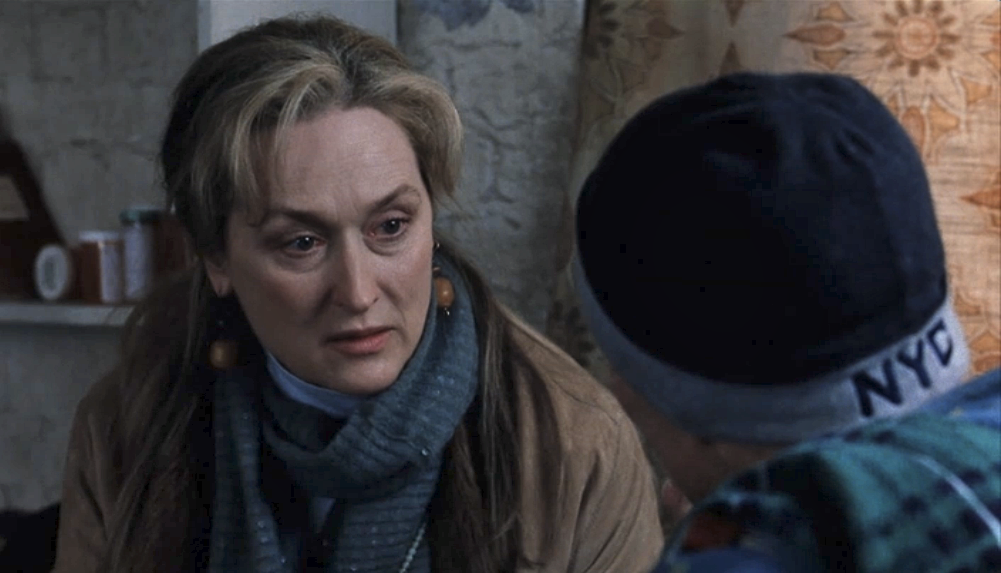
One of the most beautiful scenes comes when Virginia buries a bird with her little niece who came to visit. Even though age and experience separates them, the two girls have an understanding, the little girl can just sense the sadness within the woman who lives more for the characters in her book than for herself.
“What happens when we die?” the little girl asks her.
“We return to the place where we came from.”
“I don’t remember where I came from.”
“Nor do I.”
More than anything though, this movie is intense, slowly building up to an ending you can’t guess at until it arrives. There are scenes of sexual confusion that arise out of desperation, and abrupt closeups of little things that shouldn’t matter, like trash cans when things get thrown into them and eggs as they’re cracked into a bowl.
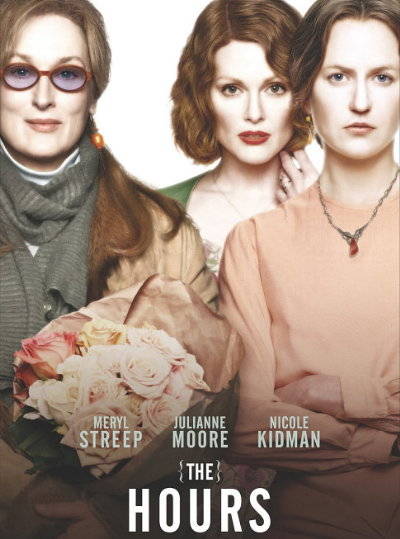
One of my favorite quotes comes from Meryl Streep’s character Clarissa, who tells her daughter:
“I remember one morning getting up at dawn, there was such a sense of possibility. You know, that feeling? And I remember thinking to myself: So, this is the beginning of happiness. This is where it starts. And of course there will always be more. It never occurred to me it wasn’t the beginning. It was happiness. It was the moment. Right then.”
You can stream The Hours on Netflix Instant, and read more about it on the IMDB page.
Apr 5, 2013 | illustration
Thick paint drips down her face in a color close the skin’s; it covers and reveals hair and flesh wherever gravity takes it.
Melissa Cooke’s series “Surfaced” analyzes obscured faces – faces covered in liquids and warped by Xerox machines in ways that make you wonder where the real skin actually begins and ends. But these aren’t photographs, so none of it is really real anyways – they’re graphite drawings that capture every follicle and wrinkle, every tug and pull of skin, and they immerse you in a world that plays with texture and perception in bold closeup ways, gathering intensity from details.
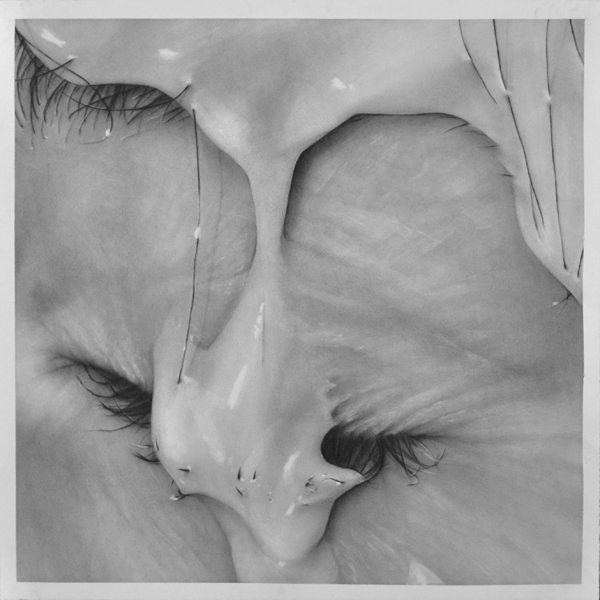
Trickle, graphite on paper, 24 ” x 24 “
Paint and hair don’t function harmoniously the way paint and skin do. Hair isn’t manageable and flat – it pokes through the liquid that’s attempting to cover it, refusing to be masked or hidden. In “Surfaced,” this is the role of the eyelashes and eyebrows, lines of rebellion against the paint, breaking through the color the same way the lines in the skin do.
They become something different because the paint gives them an alias, a form of cover, but the most substantive parts can’t be completely obscured. The paint dips into the flesh’s crevices, filling and amplifying the lines that have come from years of smiling and crying.
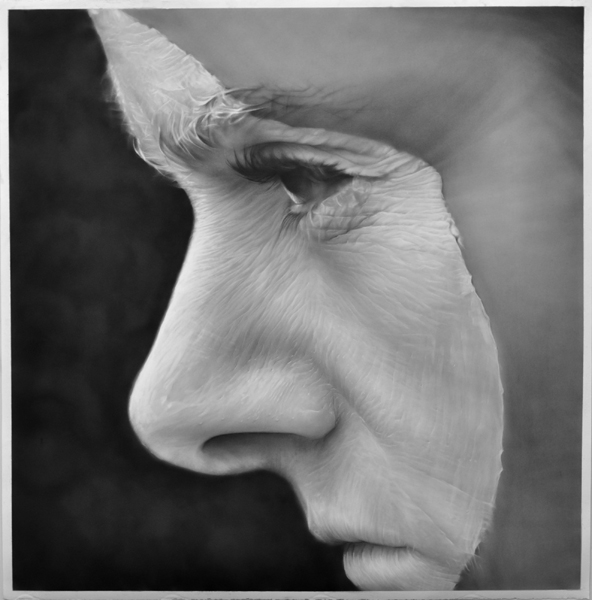
Crested, graphite on paper, 50 ” x 50 “
According to Melissa’s description of the series, “Surfaced” works to examine the relationship between photography, painting and drawing in portraiture. She used her own face as a canvas, painting and pouring liquids onto herself as she took photographs. Then, she used those photos to create her graphite drawings.
“The photo shoot references the practice of drawing and painting; then the final graphite drawing references photography,” she said, “The boundaries between the mediums are broken down and the processes are interwoven.”
She purposefully focused on zoomed in sections of her face, obscuring the notion of the portrait and concentrating on humanness in general as opposed to one specific human:
“The cropping pushes the face to the surface of the paper, making the figure more ambiguous. Flesh becomes abstracted: obliterated by paint on the skin, distorted by the eye of the camera lens, or smeared by the glass of a Xerox machine.”
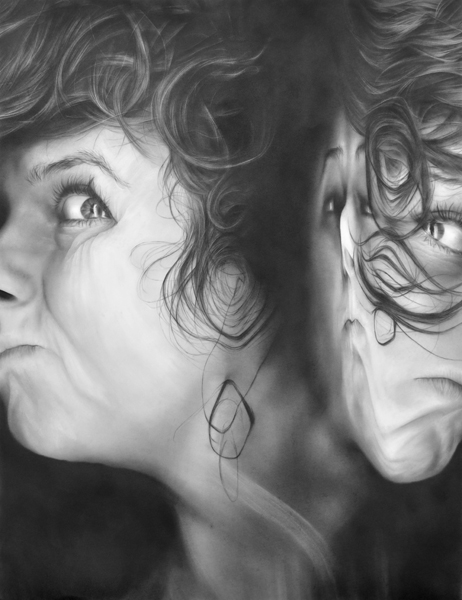
Xerox #5, graphite on paper, 50 ” x 38 “
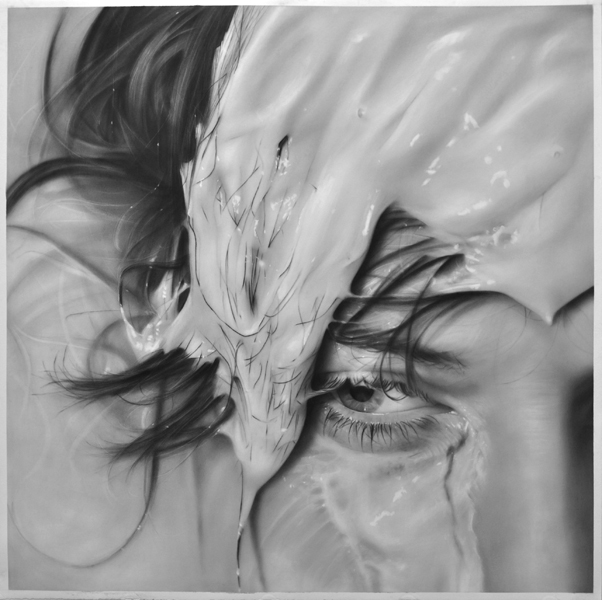
Washed Out, graphite on paper, 50 ” x 50 “
Melissa Cooke, 30, is an artist originally from Wisconsin specializing in these kind of intricate graphite drawings that examine the relationships between photography, performance, and drawing in portraiture.
She makes her drawings by dusting thin layers of graphite onto paper with a dry brush, and then editing the soft graphite against the smooth paper by erasing in details and textures. She doesn’t use pencils at all, so more than anything it’s an art of subtraction instead of addition, likening it to sculpture in a way, as Melissa carefully chips away the spots of color that shouldn’t be there.
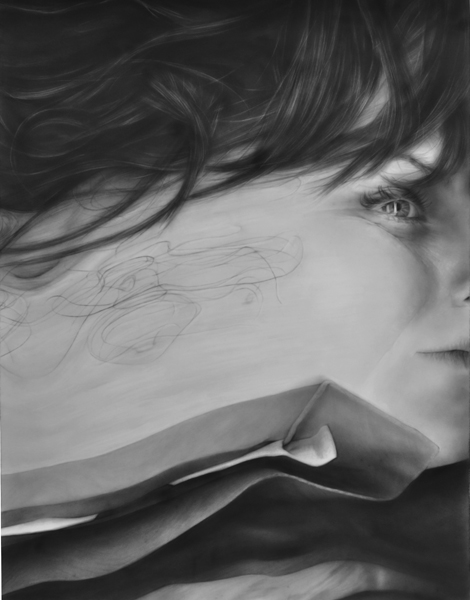
Xerox #1, graphite on paper, 50 ” x 38 “
See more from “Surfaced” and her other series of graphite drawings on Melissa’s website.
Apr 4, 2013 | tv
NBC has led the charge in TV comedy since The Office started back in 2005, and tonight’s lineup includes four new episodes of their funniest shows all right in a row from 8 to 10pm. NBC Thursday at its best.
Each show has its own take on the established formula and brings a diverse group of lovable misfits together its own way. We watch their relationships develop past obligatory acquaintances into friendships and usually a little romance too, because what’s a good show without sexual tension?
I’ve probably spent hundreds of hours watching these shows by now – Community is in its fourth season, Parks & Rec is in its fifth, The Office is now in its ninth finale season, but Go On just started this year. Altogether that makes 18 seasons of show and I’ve seen every single episode and most more than once. Some are better than others, but they’re all watchable because they’re dedicated to the characters, to the broken lovable people we can see parts of ourselves in. They’re just way funnier than we are.
Community 8/7c
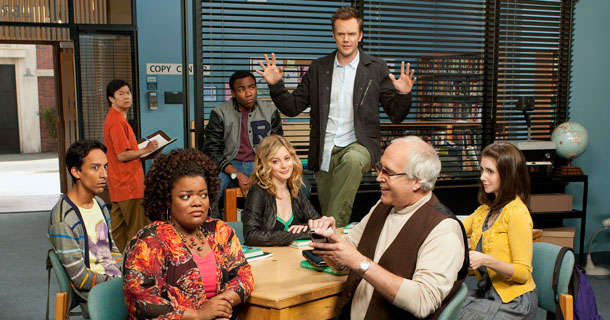
The show started as a group of community college students who formed a study group, and it seems like it only happened in the first place because they all thought the group’s founder was the coolest guy in school. He’s a lawyer disbarred for lying about his education – he has great hair and gives moving impromptu speeches that band people together. Even from the beginning, the challenge for this show was to build the relationships so strong that they no longer needed the study group to hang out, because a community college means only four years till they graduate and we’re in the fourth season right now. There have been a lot of jokes about how many years it takes some students to complete community college, and in the last episode the Dean told us that Pierce had been taken 80% of Greendale’s classes more than twice, so he’ll always be around.
Community was wobbly last year in its third season because people thought Abed’s mental problems were let out of control – Evil Abed had a mustache and tried to cut off Jeff’s arm and everything. But last season wrapped itself up in a pretty dramatic fashion and it turned out that Abed wasn’t crazy – the dean really had been replaced, and Chang had taken over the school with an army of teenagers working for college credit. Well, Abed was still crazy with the whole let’s-turn-everything-into-a-tv-episode thing, but he was right about the dean, and in the last episode they busted the dean out of captivity, revealed Chang to get un-expelled.
Now, the characters have sort of banded around the school itself, since the dean thinks Jeff is a Greek god and it seems like somehow they all share life and death experiences at least twice every year at Greendale. So maybe they’ll all just find some sort of affiliation with the school and the show can go on forever with six seasons and a movie. Even Chang is back, but he underwent a mental episode and thinks he’s a completely innocent person named Kevin now. Troy has to teach him how to use the water fountain. And even though there’s been no evidence that Chang is really hiding underneath somewhere, his whole character seems like a time bomb, counting down to the point where the real Chang can’t take it anymore and lets his evil side escape.
Tonight’s episode is called “Herstory of Dance.” Britta plans a rival dance at the same time as Greendale’s Sadie Hawkin’s dance. She’s the worst.
Parks and Rec 8:30/7:30c
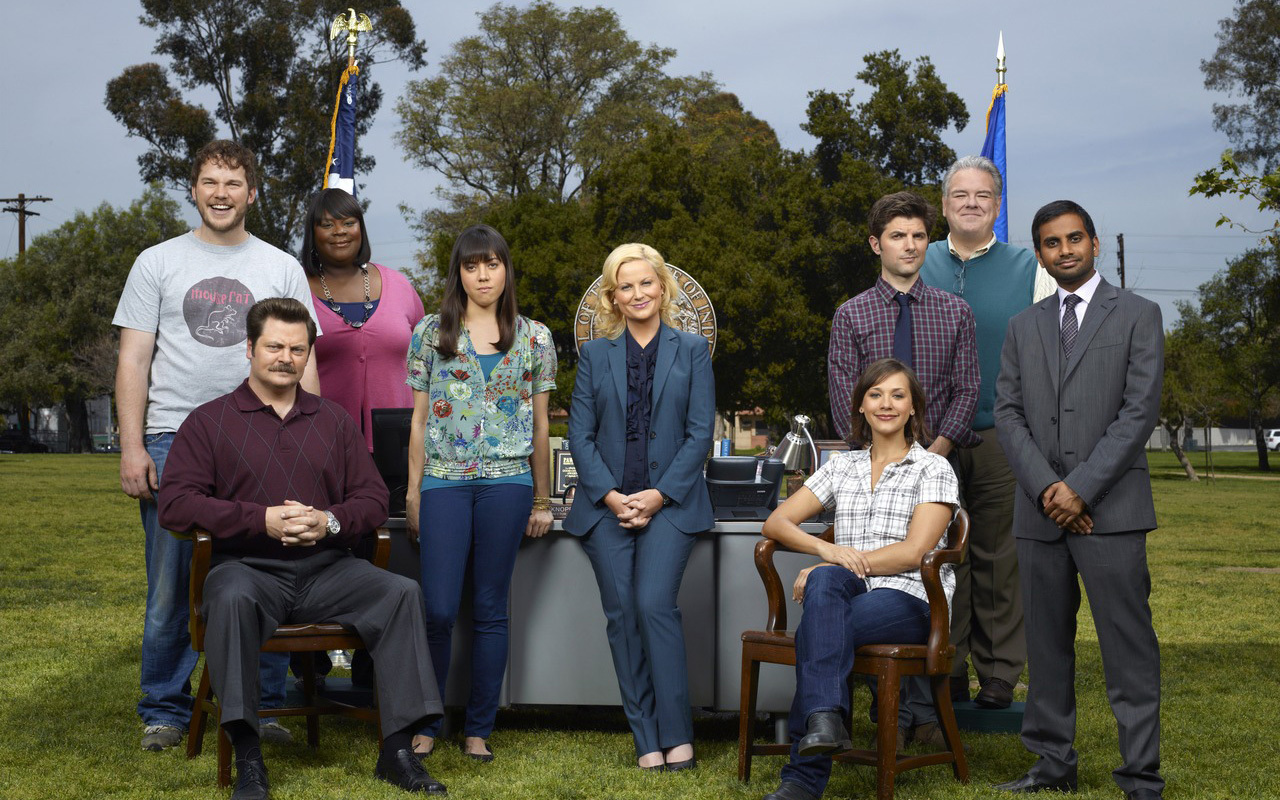
Parks and Rec has really mastered the lovable part of the lovable misfits equation, and a big part of that is having characters that are constantly improving, characters with motivation who want to do something good with their time. Leslie Knope leads the pack with dreams of being the first woman president, and we watched her campaign and win a spot on City Council, even after her scandal with Ben made her lose her campaign managers. Her friends and coworkers were there for her, and I cried because of how incredibly cute it was, candy office and all.
Each person on the show has such a special identity – Parks & Rec dedicates most of its time to character development. They’re all warm and nice, except April of course, but best of all they’re honest – they know who they are and say what they’re feeling, which is the best way to get close to people in the first place. So we as viewers are able to get close to the characters, and they’re able to get close to each other while they all find rewarding places in the world.
April wants to become a veterinarian, after realizing how much she loves animals when she runs an adoption fair for the Parks & Rec department. The last episode had the most adorable story line where Ann forced April to hang out with her in exchange for a recommendation for veterinary school. They even sang “Time After Time” and after four years of April really hating and then pretending to hate Ann, we saw her let her guard down and admit that she actually likes her and cares that things in her life work out.
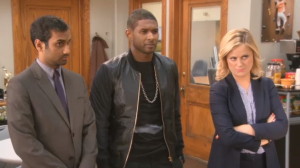
Tonight’s episode is called “Partridge” and it’ll star pop icon Usher as himself, who teaches the whole team how to properly spin in the judges chairs from The Voice.
The Office 9/8c
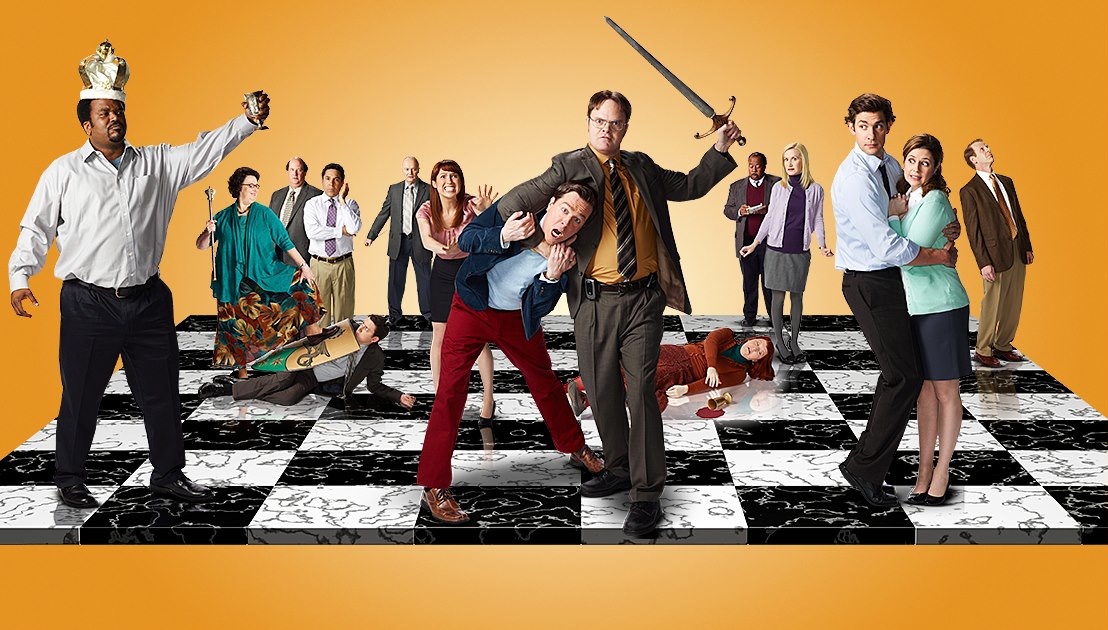
Ever since the end of the show’s seventh season, The Office has been working to replace the perfect boss, Michael Scott. The eighth season went haywire with Saber’s new CEO Robert California calling for a retail store and trips to Florida. It ended with an annoying bit where he lets Nellie take over Andy’s job as manager when he leaves for Florida to find Erin, so when Andy comes back to a demotion, he conspires with David Wallace to buy Dunder Mifflin back from Saber, so Saber goes out of business and Andy is made manager again. Crazy right?
The show found more of its footing in the ninth season though – Andy had settled into the manager’s position and often recalls the wonderfully tasteless flavors of Michael Scott. But while Michael Scott made it seven seasons, Andy only made it to the sixth episode of this newest season before he ditches the job again and goes off on a boat with his brother for three months. Randomly, instantly setting sail and leaving his new perfect girlfriend Erin behind. Probably the most frustrating part of this season came when David Wallace let him off the hook, once he let slip that he’d been gone for three months – somehow David rationalized it as fair since Andy was the one who gave him the tip about Saber failing in the first place although it really seemed like that favor had already been paid for when Andy was reinstated as manager…
This ninth season has also been seriously debating the role that work can realistically play in someone’s life, since Jim followed a crazy dream and helped found a new sports company in Philadelphia. Pam doesn’t want to leave, and after one interview with Saul from Breaking Bad in Philadelphia, she tells Jim “I don’t know if I want this,” and that’s where they’ve left it since we took a little detour in the last episode to visit Schrute Farms. But Meredith did shave her head, so now she wears disgusting wigs and that’s fun.
The show has also been weirdly hinting at this documentary that we’re watching now might actually begin to air in the character’s world, suggesting that the whole show happened in the past as far as we’re concerned. A few episodes back the camera zoomed in on an ad for the series that popped up on Oscar’s computer screen. Tonight, that’s supposed to be addressed even further in the new episode “Promos,” where the characters actually see promos of the documentary air, and worry that all their secrets could be broadcast to the world.
Fun fact from Wikipedia: Breaking Bad’s Bryan Cranston directed this season’s “Work Bus” episode.
Go On 9:30/8:30c
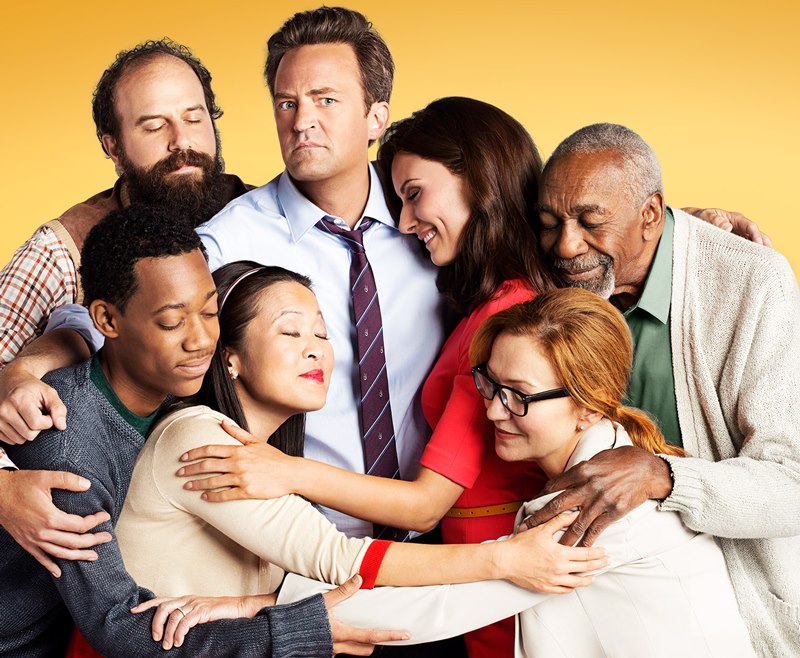
Go On began this year so we’ve only had time to fall in love with a few characters, but the premise of the show kind of requires that you at least sympathize with all these kooky adults who can’t get their lives figured out. Their obligatory connection isn’t work or community college but a grief counseling group, and the show follows this group and their leader as they work to get better and overcome whatever terrible loss they’ve had to deal with.
Each person in the group seems at least a little crazy, but in a sad, sweet kind of way that’s definitely been brought on by trauma. Lauren is the group’s leader, and she makes it too clear that she hasn’t had the most experience in grief counseling. But she’s dedicated and shows up whenever she’s needed so everyone really appreciates how much she tries and wants to help. The group has a harsh lesbian and a repressed Asian woman, along with a blind old man and an insane sweater-clad Mr. K, and they’re all so weird and funny that you can’t help but want the best for them.
Our main character Ryan is a widower whose wife spookily appears as a ghost sometimes, and we follow him at grief counseling and at work where he hosts a sports talk show that recently became the number one radio show in LA. Like everyone else on the show, he’s in recovery and struggling to deal with being alone, but everyone in the group cares about each other immediately and they all joke about how horribly bleak and sad their lives are – a bizarre kind of camaraderie but probably one of the strongest types.
For more on any of these shows, check out NBC’s website for behind-the-scenes photos and videos.
Apr 3, 2013 | photography
Girls balance on chairs in impossible ways, their limbs lifted and poised far above ground but they still don’t fall. They’re frozen in place by photo manipulation, caught in time between the leap and the fall, between sky and land. Their bodies defy gravity and anything else that might try to keep them grounded, their soft ivory skin against a dull brown textured background as they float like angels before us.
The girl below holds her hand to her mouth and looks out at us embarrassed, as if she’s just rung the bell she holds when she knew she wasn’t supposed to. Her peach dress wraps around her like a tube, letting her legs poke out like two long sticks that bend and extend and keep her in the air.
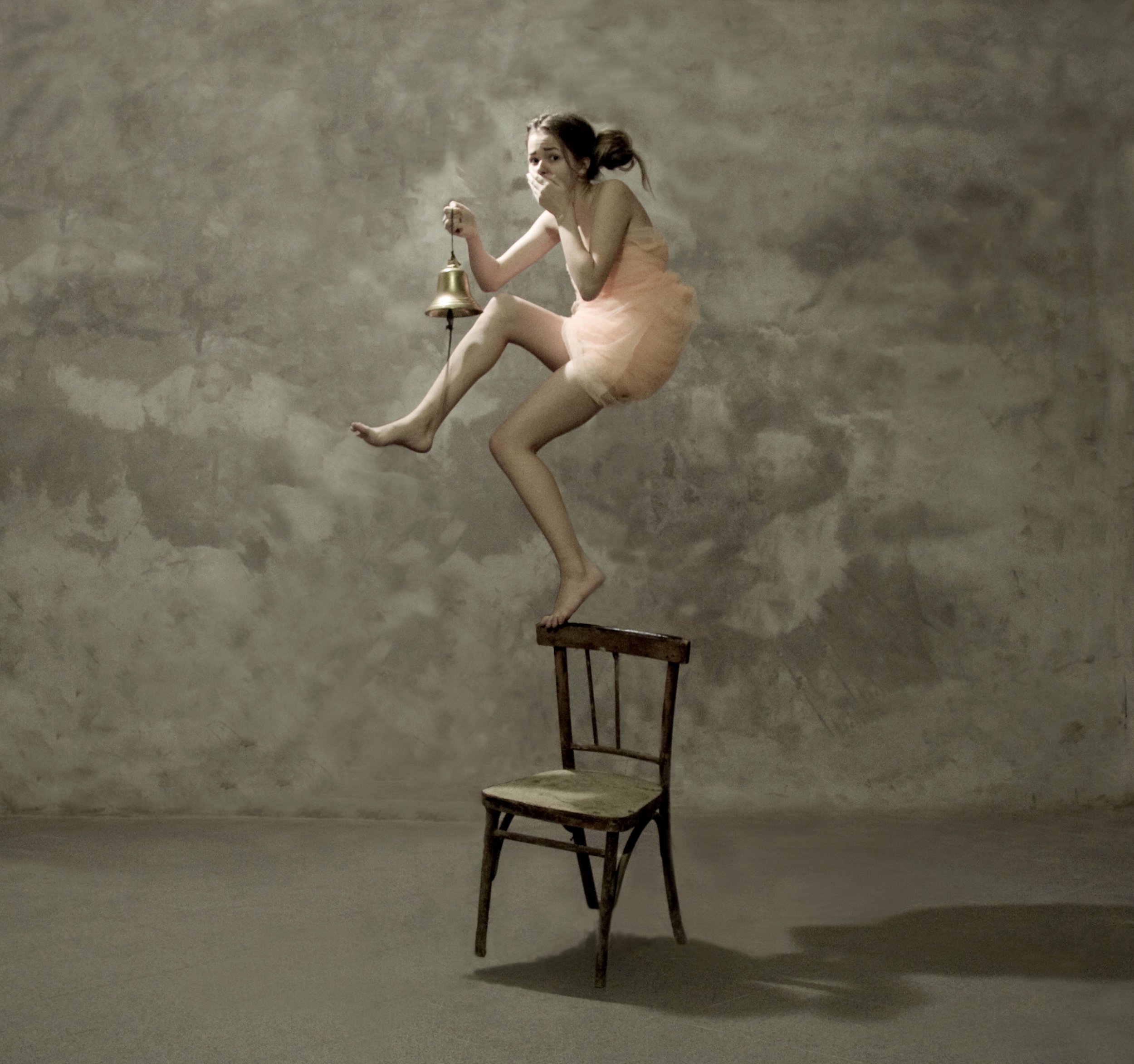
Most of the girls are left unclothed, their bodies long and skinny, stretched out like taffy across the chairs and space. That simple brown wooden chair and the gold bell are the only two props that make appearances, besides the occasional peach dress that both covers and reveals. The chair props up each girl in different ways as she seems to float above it, and the bell weighs her down with an invisible noise, its shiny gold surface against all the browns and ivories that surround it.
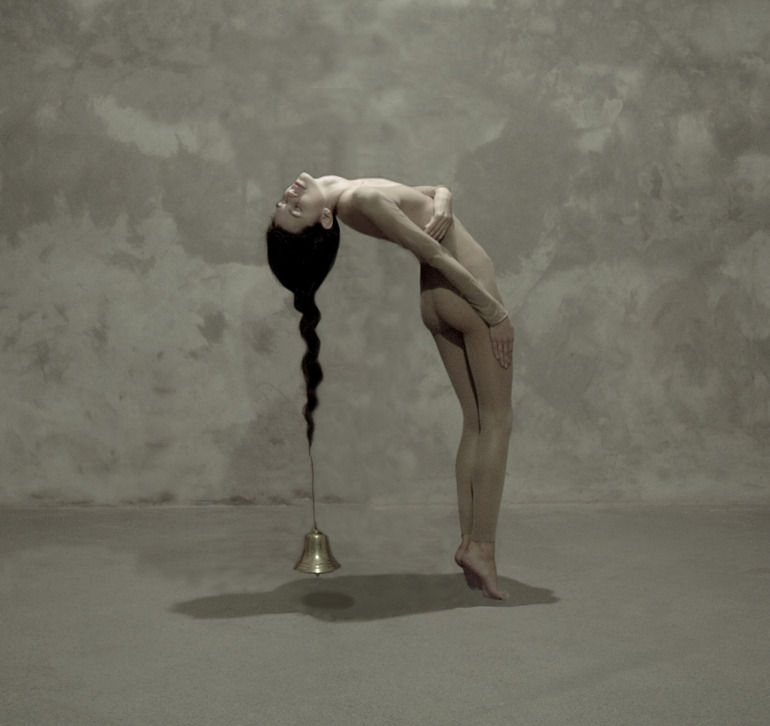
Bodrunova explains that many of her photographs “defy conventional physics and show her subjects as weightless objects with an ability to transcend space and time.”
“Sometimes we change the space around us to fit our ideas and sometimes space, place, or time dictates their rules. We can fight or we can embrace, the choice is ours.”
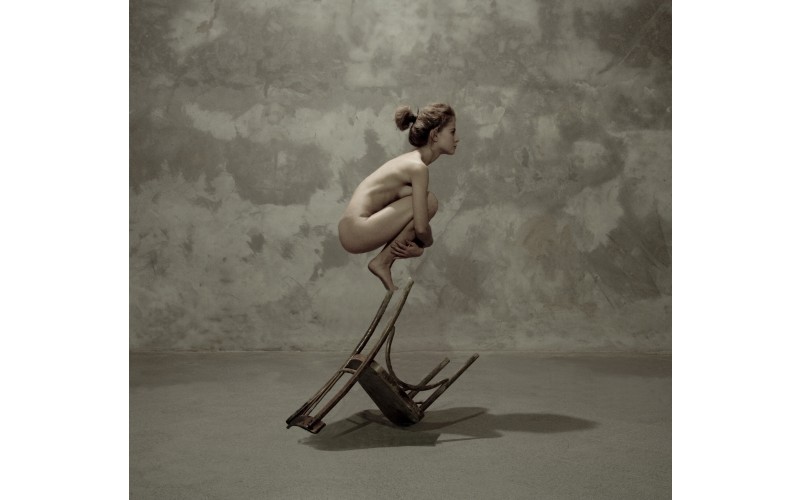
Katerina Bodrunova is a self taught 28-year-old Russian photographer whose works have been shown all over Moscow and London, along with every other big city in Europe since she first began her professional career in 2009. Since then she’s been featured in magazines from Seoul to Pittsburg, and you can also find her works on Saatchi Online.
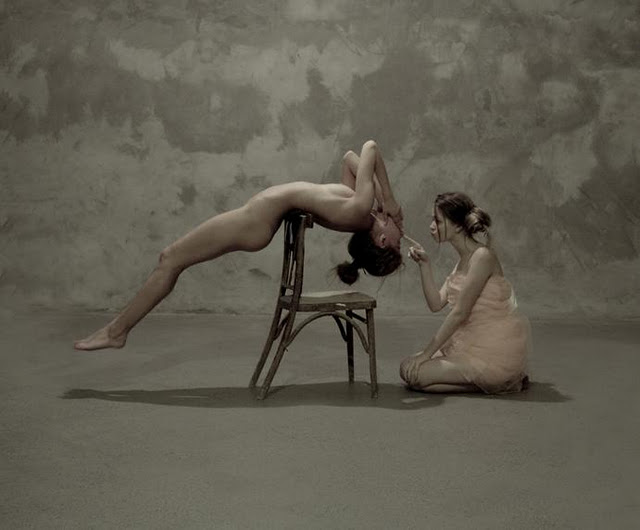
See more of Katerina Bodrunova’s work on her website and her Flickr.


























